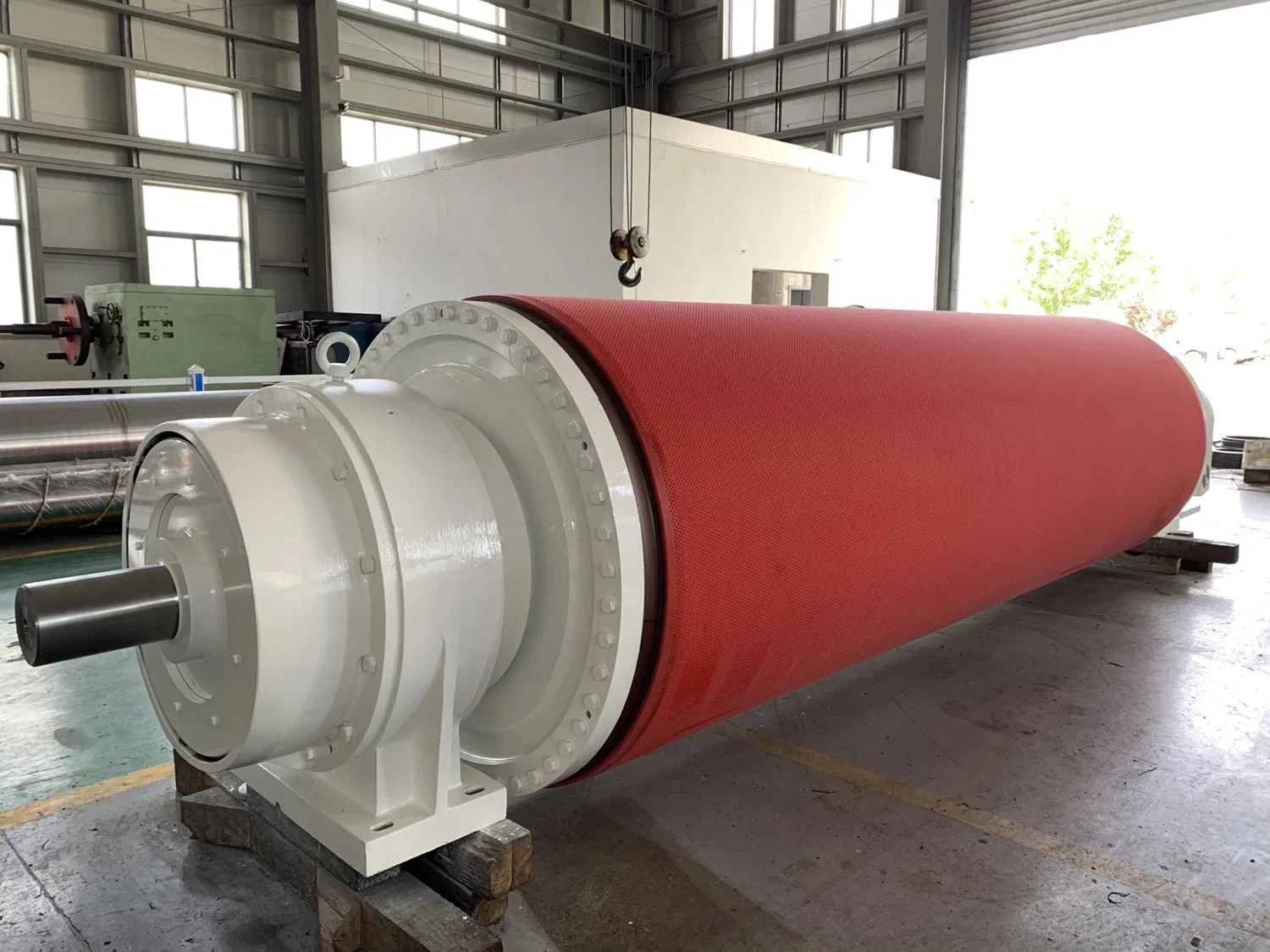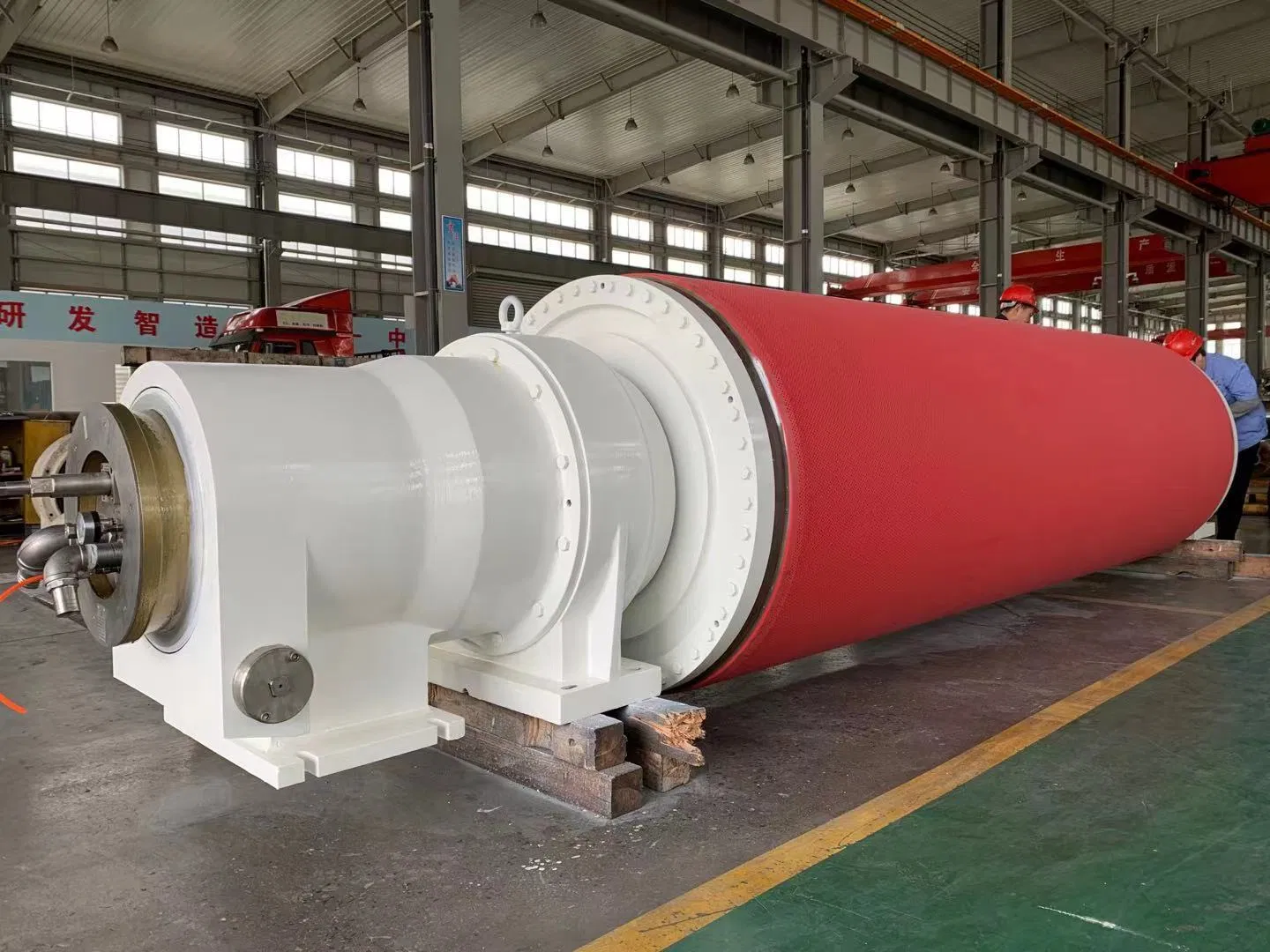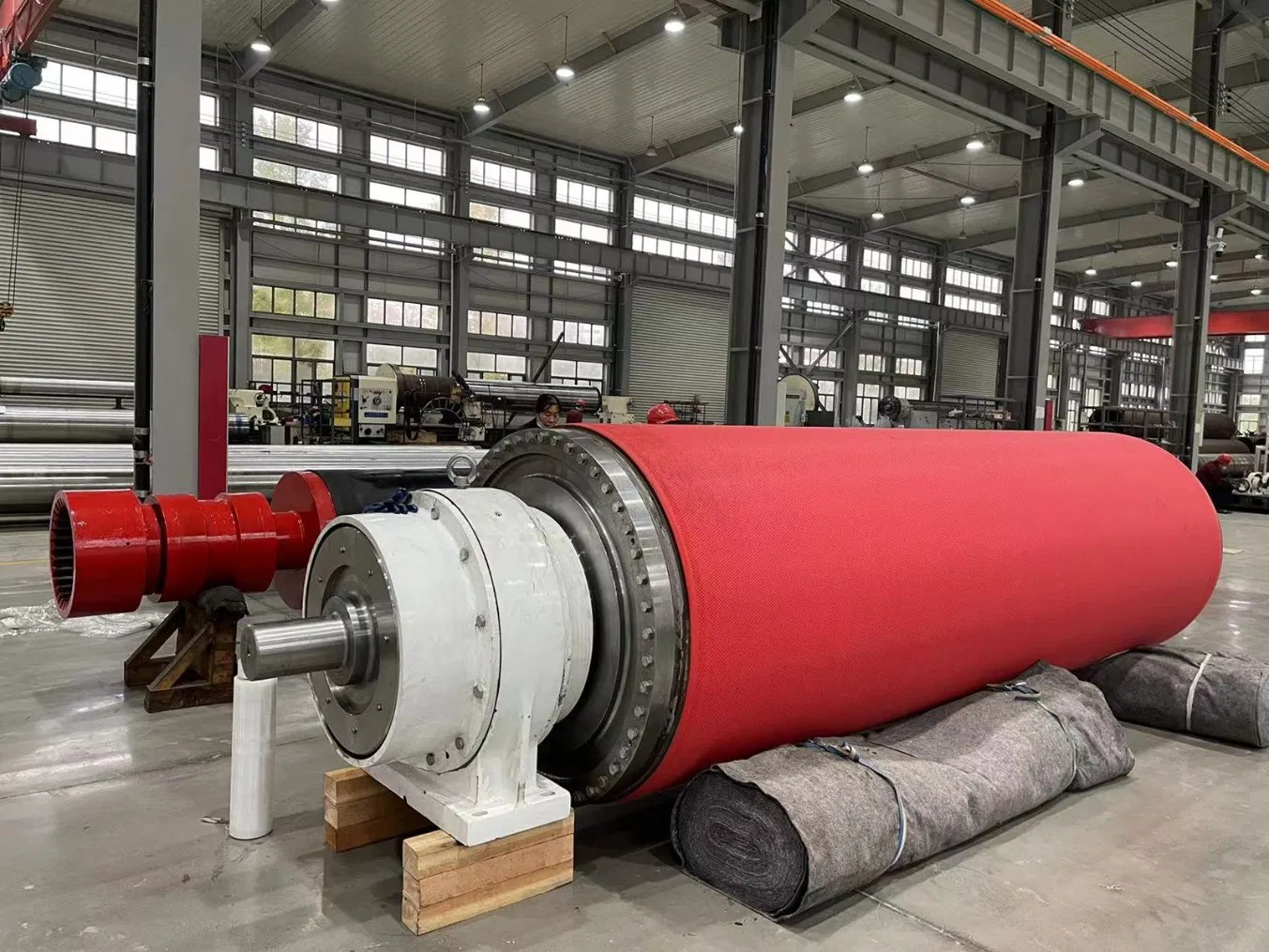In the demanding world of paper manufacturing, few things can send a shiver down a mill manager's spine quite like the words "roll failure." It's not just a minor hiccup; it’s a catastrophic event that can halt production, damage expensive equipment, and frankly speaking, cost a fortune in lost revenue and repair. When a paper machine roll fails, the immediate reaction is often to replace it and get back online as fast as possible. But to be honest, that’s just treating the symptom. Without a thorough root cause analysis, you’re simply waiting for the next failure to occur, often in the same spot, for the same underlying reason. Have you ever wondered why some rolls seem to fail repeatedly, despite seemingly adequate maintenance?
This isn't about pointing fingers; it's about understanding the 'why.' In my experience, the true cost of roll failure isn't just the replacement part, but the cumulative effect of unplanned downtime, wasted resources, and the erosion of confidence in your operational reliability. That's precisely why a structured, expert-driven approach to investigating these incidents is non-negotiable. This article will delve into an expert's 7-point checklist for root cause analysis specifically designed to tackle the complexities of paper machine roll failure, helping you move from reactive fixes to proactive prevention.
Understanding the High Stakes: Why Paper Machine Roll Failure Demands Deep Investigation
A paper machine is a marvel of engineering, a continuous operation where every component plays a critical role. Rolls, in particular, are the unsung heroes, guiding, pressing, and drying the paper web at incredible speeds. When one fails, the domino effect can be devastating. We're talking about potential damage to felts, wires, other rolls, and even the machine frame itself. The financial impact can be staggering, easily running into hundreds of thousands or even millions of dollars when you factor in lost production, repair costs, and potential safety incidents.
Interestingly enough, many paper machine roll failures are preventable. The challenge lies in accurately identifying the true culprit, which is often hidden beneath layers of operational data, maintenance history, and environmental factors. It's not always obvious. Was it a material defect? A lubrication issue? An operational anomaly? Or perhaps a combination of several subtle factors? Without a systematic approach, you're essentially guessing, and in an industry with such tight margins and high demands, guessing is a luxury no one can afford. This is where a robust root cause analysis becomes your most powerful tool for ensuring long-term paper machine reliability.
The Core of RCA: Moving Beyond Symptoms to Solutions
Root Cause Analysis (RCA) isn't just a buzzword; it's a critical methodology aimed at identifying the fundamental reason for a problem or failure. Think of it like this: if your car keeps having a flat tire, replacing the tire is a fix, but finding the nail that caused it, or discovering that your alignment is off, is root cause analysis. In the context of paper machine operations, this means digging deep to understand why a roll failed, rather than just replacing it and hoping for the best.
Many experts agree that effective RCA involves more than just technical expertise; it requires a detective's mindset, a willingness to challenge assumptions, and a commitment to gathering comprehensive data. It's about asking "why" repeatedly until you can no longer find a deeper, underlying cause. For paper machine roll failure, this process is paramount. It allows mills to implement targeted corrective actions that prevent recurrence, optimize maintenance strategies, and ultimately, enhance overall operational efficiency and safety. It’s worth noting that a well-executed RCA can transform a costly failure into a valuable learning opportunity, driving continuous improvement throughout the mill.
An Expert's 7-Point Checklist for Root Cause Analysis of Paper Machine Roll Failure
When a paper machine roll fails, panic can set in. But instead of rushing, I’ve found that a methodical approach yields the best results. This 7-point checklist provides a structured framework for conducting a thorough root cause analysis, guiding you through the critical steps to uncover the truth behind the failure.
1. Initial Observation and Data Collection: The First Responders' Report
The moment a roll fails, critical information begins to vanish. The first step is to secure the scene and collect immediate observations. This includes visual inspection of the failed roll and surrounding components, noting the exact location and nature of the failure (e.g., crack, wear, delamination, bearing seizure). Interview operators and maintenance personnel who were present at the time of the incident. What did they see, hear, or smell? What were the machine's operating parameters just before the failure? Gather all relevant operational data: speed, temperature, pressure, tension, vacuum levels, and any alarms. Collect maintenance logs for the specific roll, including installation date, previous repairs, and routine maintenance schedules. This initial data forms the foundation of your investigation.
2. Material Analysis: What Was It Made Of?
The material composition and integrity of the roll and its coatings are fundamental. Was the roll shell material appropriate for the application? Were there any manufacturing defects in the casting or fabrication? For covered rolls, analyze the cover material for signs of degradation, chemical attack, or improper bonding. I've seen cases where seemingly minor changes in process chemistry led to rapid cover deterioration. If possible, send samples of the failed material to a metallurgical or polymer lab for detailed analysis. They can identify micro-cracks, inclusions, fatigue, or material property deviations that might not be visible to the naked eye. This is a crucial step in understanding the inherent strength and resistance of the roll to operational stresses.
3. Bearing and Lubrication Assessment: The Silent Killers
Frankly speaking, a significant percentage of roll failures can be traced back to bearing issues or lubrication problems. Bearings are the workhorses, constantly under stress. Inspect the failed bearings for signs of brinelling, spalling, pitting, or overheating. Was the correct type of bearing used for the application? Equally important is the lubrication system. Was the correct lubricant used? Was it applied at the right frequency and in the correct amount? Check for contamination in the lubricant, which can accelerate wear. Analyze lubricant samples for wear particles or signs of degradation. A clogged lubrication line, an incorrect grease, or even over-lubrication can lead to premature bearing failure, which then cascades into roll failure.
4. Operational Parameter Review: The Machine's Story
Rolls operate within specific parameters. Deviations from these can induce excessive stress and lead to failure. Review historical operational data leading up to the failure. Were there any spikes in temperature, pressure, or speed? Was there an unexpected shutdown or startup event? Pay close attention to any changes in web tension or sheet breaks that might have put sudden loads on the roll. For press rolls, analyze nip pressures and profiles. For dryer rolls, look at steam pressure and condensate removal efficiency. Understanding the operational context is vital; sometimes, the roll itself isn't the problem, but rather the conditions it was subjected to.

5. Vibration Analysis: The Early Warning System
Vibration analysis is an incredibly powerful diagnostic tool, often providing insights into developing problems long before catastrophic failure. If vibration monitoring was in place, analyze the data leading up to the incident. Were there any changes in vibration patterns, frequencies, or amplitudes? Increased vibration can indicate imbalance, misalignment, bearing wear, or structural issues. Even if continuous monitoring wasn't in place, a post-failure vibration analysis of similar rolls or the machine frame can offer clues about systemic issues. I've often found that subtle vibration changes, ignored or missed, were the precursors to major roll failures.
6. Alignment and Balance Checks: The Geometry of Failure
Rolls are designed to operate with precise alignment and balance. Misalignment, even slight, can introduce uneven loading, excessive vibration, and premature wear on bearings and roll surfaces. Check the alignment of the failed roll's journals and the overall machine frame. Was there any evidence of foundation settlement or structural distortion? Similarly, an unbalanced roll can generate significant dynamic forces, leading to fatigue and failure. While it’s hard to check balance on a failed roll, consider the balance history of similar rolls or recent maintenance activities that might have affected it. These often overlooked factors are critical for understanding long-term roll stress.
7. Maintenance Practices and History Review: The Human Element and Systemic Issues
Finally, and perhaps most critically, review the entire maintenance history and practices related to the failed roll and similar components. Was the roll installed correctly? Were all maintenance procedures followed diligently? Were there any shortcuts taken? Look for patterns in maintenance records – perhaps a specific technician always tightens bolts too much, or a particular lubrication schedule is consistently missed. Consider the training level of personnel involved in roll maintenance and operation. Sometimes, the root cause isn't a mechanical fault but a procedural or human error. This step also involves reviewing past failures of similar rolls or components within the mill to identify recurring issues that might point to systemic problems in design, operation, or maintenance philosophy. This holistic view is essential for a comprehensive Paper Machine Roll Failure? An Expert's 7-Point Checklist for Root Cause Analysis.

Beyond the Checklist: Proactive Measures and Continuous Improvement
Identifying the root cause of a paper machine roll failure is a monumental achievement, but the journey doesn't end there. The real value comes from implementing corrective and preventive actions that ensure the failure doesn't recur. This means not just fixing the immediate problem, but addressing the systemic issues that allowed it to happen.
In my experience, this often involves a multi-faceted approach. It might mean revising maintenance procedures, investing in new diagnostic tools like advanced vibration monitoring systems, or implementing predictive maintenance strategies to catch issues before they escalate. Training is also paramount; ensuring that operators and maintenance staff are fully equipped with the knowledge and skills to identify early warning signs and perform tasks correctly can significantly reduce the likelihood of future incidents.
Regular, scheduled inspections, coupled with condition monitoring techniques, are your best defense against unexpected downtime. Think about thermography for bearing hot spots, ultrasonic testing for internal defects, or even simple visual inspections performed by trained eyes. Establishing a robust feedback loop, where insights from every root cause analysis are fed back into maintenance planning, design improvements, and operational protocols, is key to achieving true paper machine reliability. This continuous improvement mindset transforms failures from costly setbacks into invaluable lessons, strengthening your entire operation and preventing paper machine downtime.

Conclusion: Mastering Roll Reliability for Uninterrupted Production
Paper machine roll failure is a complex and costly challenge, but it doesn't have to be a recurring nightmare. By embracing a systematic and thorough approach to root cause analysis, mills can move beyond reactive repairs and towards a proactive, predictive maintenance culture. The expert's 7-point checklist outlined here provides a powerful framework for dissecting failures, identifying their true origins, and implementing effective, lasting solutions.
Remember, every failure holds a lesson. By meticulously investigating each incident, leveraging data, and fostering a culture of continuous improvement, you not only prevent future roll failures but also enhance the overall efficiency, safety, and profitability of your paper machine operations. Mastering the art of root cause analysis for Paper Machine Roll Failure? An Expert's 7-Point Checklist for Root Cause Analysis is not just about fixing a broken part; it's about building a more resilient, reliable, and productive future for your mill.
For more detailed information, please visit our official website:Paper machine roll failure
About the author: Markus Thorne is a seasoned industrial reliability engineer with over two decades of experience specializing in paper machine diagnostics and maintenance. His expertise lies in uncovering the hidden causes of equipment failure and implementing robust preventive strategies. Markus is passionate about optimizing operational efficiency and has helped numerous mills worldwide achieve significant reductions in downtime and maintenance costs through meticulous root cause analysis.


